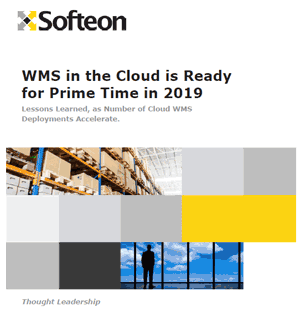The Labor (Day) Supply Chain 2019
Monday of course marks the annual Labor Day holiday both here and in Canada. Starting in 2011, I have written a column on the state of the labor supply chain in conjunction with this event. It was popular enough that I have continued on each year since. It's a lot of work, but well worth it.
The last year was not great for labor, again - but there just might be some change in the air.
The percent of total US workers that are union members dropped yet gain in 2018 to 10.5%, down from 10.7 in 2017 and 11.1% in 2015. But unions are now dominated by public sector workers such as police and teachers. Unionization rates nationally at are 33.9% in the public sector, and just 6.4% in the private sector, down from 6.5% in 2017.
| GILMORE SAYS: |
The issue for labor is still not yet "here come the robots," but will be soon.
WHAT DO YOU SAY?
Send us your
Feedback here
|
All this of course continues the powerful long-term trend of a steady decline since the Labor Department started reporting on it in 1983, when overall unionization was at 20.1% and at 16.8% in the private sector. Those numbers themselves were well down from previous decades before this metric was officially tracked by the government.
I will note part of that decline in private sector unionization rates is due to the loss of some 6-7 million US manufacturing jobs since 1983, as manufacturing is clearly more organized than the service sector, but that is far from the only factor. Unions have clearly lost appeal to many, especially in the South, where many new manufacturing factories have been headed for some two decades.
Together, there were 14.7 million private and public sector employees in a union in 2018, up a few hundred thousand from 2016, mostly the result of the overall growth in jobs. But compare that to the 17.7 million union members in 1983, when the total US labor force was much smaller.
There are also huge differences between states. North Carolina and South Carolina had the lowest unionization rates (2.7% each) in 2018. The next lowest rates were in Utah (4.1%) and Texas and Virginia (4.3% each). Two states had union membership rates over 20.0% in 2018: Hawaii (23.1%) and New York (22.3%).
The percent of US manufacturing workers that are union members fell a tick 9.0% last year from 9.1% in 2017, but up a bit from 8.8% in 2016. Those numbers are a bit lower than the percent of manufacturing workers covered by union contracts, such as those that opt out in right-to-work states, with coverage of 9.7% last year.
Ponder that - just one in 11 US manufacturing workers are unionized today, versus 17.5% in 1994. According to unionstats.com, 38% of private sector manufacturing workers were in unions as recently as 1973.
Don't think this downward union trend is only a US phenomenon. Unionization rates in labor-loving Sweden, for example, have fallen from about 90% in the mid-1990s to around 66% today. Many other countries mirror US unionization rates more closely. Unionization in France - generally considered very supportive of labor - has fallen to just 7.9% of all workers. Union membership is higher in the UK, at about 23%, but that's down from more like 40% in the mid-1990s.
In July, there were about 8.99 million non-supervisory manufacturing workers in the US, up a bit from 8.90 million a year ago. That is also well up from the bottom of the recession in 2009, when we fell to about 8 million shop floor workers, meaning we've added almost one million manufacturing jobs since then. But in 2004, there were just over 10 million factory floor workers - we're down just over 1 million positions from that level, and much more from the 1990s.
That obviously puts general downward pressure on wages, though the lack of wage growth isn't nearly as bad as I would have guessed, based on all the media reports.
According to the BLS, the average hourly wage (I believe including benefits) for shop floor manufacturing workers was about $22.16 in July, up from $21.44 in 2018, or about 3.3% growth year over year, which is pretty good.
That's also up from the $18.29 per hour in July 2009, or a rise of 21.1% over 10 years. That's a cumulative average annual growth rate of 1.94%. So wages have risen modestly, about equal with inflation, and thus not enough to improve a worker's lifestyle, especially while healthcare costs take more and more of the paycheck.
Meanwhile, there has been very steady growth in warehouse jobs, though they represent just a tiny fraction of manufacturing positions. There are now about 1 million non-supervisory warehouse workers in the US (as of June), up sharply yet again from some 904,000 in June 2018, a huge increase of an incredible 10.6% in one year. The number is substantially higher than the 557,000 warehouse workers in 2009, a rise of 79.5%% over 10 years - but even with that growth they only represent about 11.2% of manufacturing floor jobs - though that percentage is rising. (I'll note some jobs at plant warehouses are counted as manufacturing positions.)
In terms of wages, average non-supervisory pay for warehouse workers was $18.56 in June, up a reasonably modest 4.3%% versus 5.0% growth the previous year. That's also about 18% less than average manufacturing rate - but the gap is shrinking. It was 23% in 2016. Pay for warehouse workers was at $15.31 in June 2008, meaning DC wages have risen only 22.2% over the past decade - and most of that in the past few years.
Inflation in warehouse wages has finally starting to take hold, as one would expect in the face of such demand. It's way overdue, actually.
We've heard of $18+ per hour just in wages in some tight markets. The DC labor situation is almost at crisis levels right now - driving the huge current interest in automation of all sorts.
The most critical union vote of the year again went against labor, as 1700 workers at a Volkswagen plant in Chattanooga voted against joining the UAW, as they also did in 2015, this time in the face of major ad spending by the union before the election.
The vote was close - just 52% voted No - but kept the UAW's success at unionizing workers at factories of foreign automakers, mostly in the South, at 0%.
Labor strikes, once such a commonplace event, have almost disappeared at least outside the teacher ranks.
Last year, there were about 20 strikes involving more than 1,000 workers, a big jump from just seven in 2017. But that compares 69 in 1986 and 276 in 1976. Labor law tilts so far in favor of management that "strikes amount to career suicide for most workers," says Michael LeRoy, a University of Illinois law professor who specializes in labor relations
Almost all of those major strikes were outside of manufacturing, we will note.
There were no additions in the number of "right to work" states in 2018, under which employees can't be compelled to join unions. Once mostly found only in Southern and some Western states, recently states in the Midwest have jumped on the bandwagon despite furious opposition from labor. There are now 27 such states, with some action to move in that direction in Ohio and Maine
But there some hopeful signs for labor.
With what seems to be a decent shot at winning the White House in 2020, a number of Democratic candidates have vowed they will end right-to-work laws at the state level, among other pro-labor changes.
 There is growing discussion in some media circles that workers (white and blue collar) should be getting a higher share of corporate profits, a measure that has been falling for some time. Keep your eye on this one. There is growing discussion in some media circles that workers (white and blue collar) should be getting a higher share of corporate profits, a measure that has been falling for some time. Keep your eye on this one.
And at Amazon, in April a group of white collar employees boldly put forth a shareholder resolution asking the company to report publicly on how it plans to reduce its reliance on fossil fuels and manage the risks posed by climate change. While the measure failed, Amazon did soon after announce some major Green programs - and the 5000+ employees who signed the letter appeared to suffer no punitive measures.
There were somewhat similar employee actions at Google and Microsoft. Is this a trend that will stick, and/or move beyond tech?
The State of New Jersey just announced plans to crack down on "misclassified" workers, meaning those now acting as contact employees who the state thinks should be full time. A high percent of these will be independent truck drivers. It will also use California's "ABC" test - a tough one to get past to maintain contractor status, though that rule is still under legal challenge. But this could and I predict will spread beyond the Golden and Garden states.
In late 2018, the steelworkers union reached an agreement with US Steel that included a 14% percent wage boost over four years and maintained the union's generous health care coverage. The 2015 contact had kept wages flat. The steel workers had similar success with other firms, in a victory for labor.
There's a lot more, but I am well out of space. The issue for labor is still not yet "here come the robots," but will be soon.
Any reaction to our summary of the labor supply chain 2018? Let us know your thought at the Feedback button below.
|



![]()

![]()

![]()

![]()











